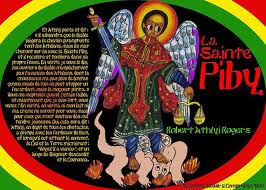 VODOUN – 21 NATIONS UNDER GOD SANCE TRADITION
VODOUN – 21 NATIONS UNDER GOD SANCE TRADITION
From thebestlovespell, 2013 [Edited]
Contrary to popular belief the first Africans to set foot on Puerto Rico or the Americas for that matter where free men. Even as late as 150, a West African man who was the son of a Yoruba King and later baptized “Juan Garrido” was an African Conquistador who worked for Juan Ponce de Leon, “Puerto Rico’s first Governor” and was the first African man to set foot on Puerto Rican soil after the European ‘conquest’ and almost 100 years prior to the first Africans caught in the European slavery system to be taken to the United States “Jamestown 1607”. Another African man, called Pedro Mejías, was married to the last Cacica Chief of Puerto Rico, Yuiza who like Pedro Mejias, was baptized a Catholic and renamed “Luisa” in order for both to be legally wed under Spanish law. Like the Dominican Anacaona in the Agua Dulce Division, Yuiza was the last female Cacica “Chief” to then become part of the Spirits venerated in Puerto Rican Sance.
Like the European enslavers, the African people came from different societies and tribes, each having their own dialect, language and culture. Haitian Vodou or Voudun consists of 21 Nations or Nasyons of Lwa – what Dominicans call los Loases or Misterios de La 21 Divisiones (also known as Budű or Vudű Dominicano.) Continue reading
 Las 21 Divisiones and Los Misterios
Las 21 Divisiones and Los Misterios


 PRAYERS TO THE ORISHAS
PRAYERS TO THE ORISHAS
 Gede
Gede










Recent Comments